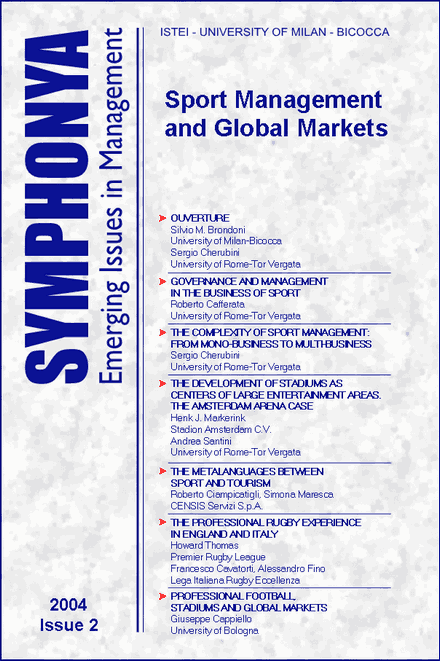The Development of Stadiums as Centers of Large Entertainment Areas. The Amsterdam ArenA Case
DOI:
https://doi.org/10.4468/2004.2.04markerink.santiniKeywords:
Sport Management, Sport Marketing, Stadium Management, Stadium and Urban Development, Real Estate Management, Project Financing, The Amsterdam ArenA CaseAbstract
On August 14th 1996, the opening ceremony of the Amsterdam ArenA took place; the first stadium intended to be a multifunctional structure, a place where to host a wide variety of events, with a highway passing underneath the pitch and with a sliding roof. The Amsterdam ArenA case represents a successful example of private-public partnership. A win-win solution has brought benefits to both parties. In today’s competitive global markets, the event itself is no longer sufficient to motivate consumers to pay expensive tickets and parking fees. To be worthwhile, spectators expect to be immersed in an experience. AFC Ajax remains the stadium’s anchor tenant, Nevertheless the Amsterdam ArenA case also demonstrates the role that a stadium can play as a catalyst for urban renewal.
Downloads
Published
How to Cite
Issue
Section
License
The authors retain all rights to the original work without any restrictions.
License for Published Contents

You are free to copy, distribute and transmit the work, and to adapt the work. You must attribute the work in the manner specified by the author or licensor (but not in any way that suggests that they endorse you or your use of the work).
License for Metadata

Symphonya published articles metadata are dedicated to the public domain by waiving all publisher's rights to the work worldwide under copyright law, including all related and neighboring rights, to the extent allowed by law.
You can copy, modify, distribute and perform the work, even for commercial purposes, all without asking permission.



